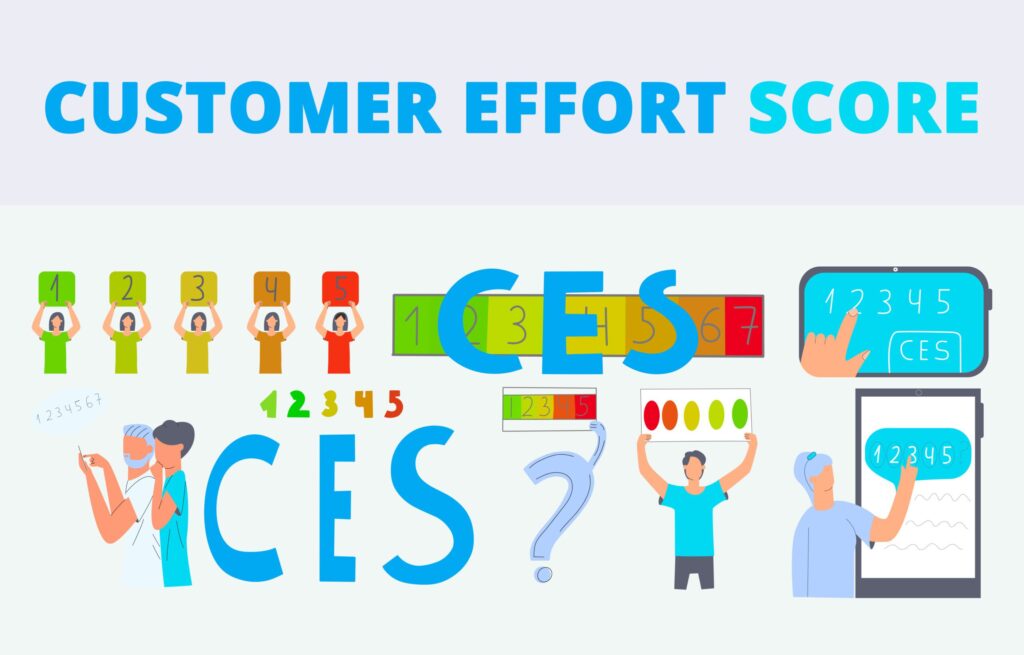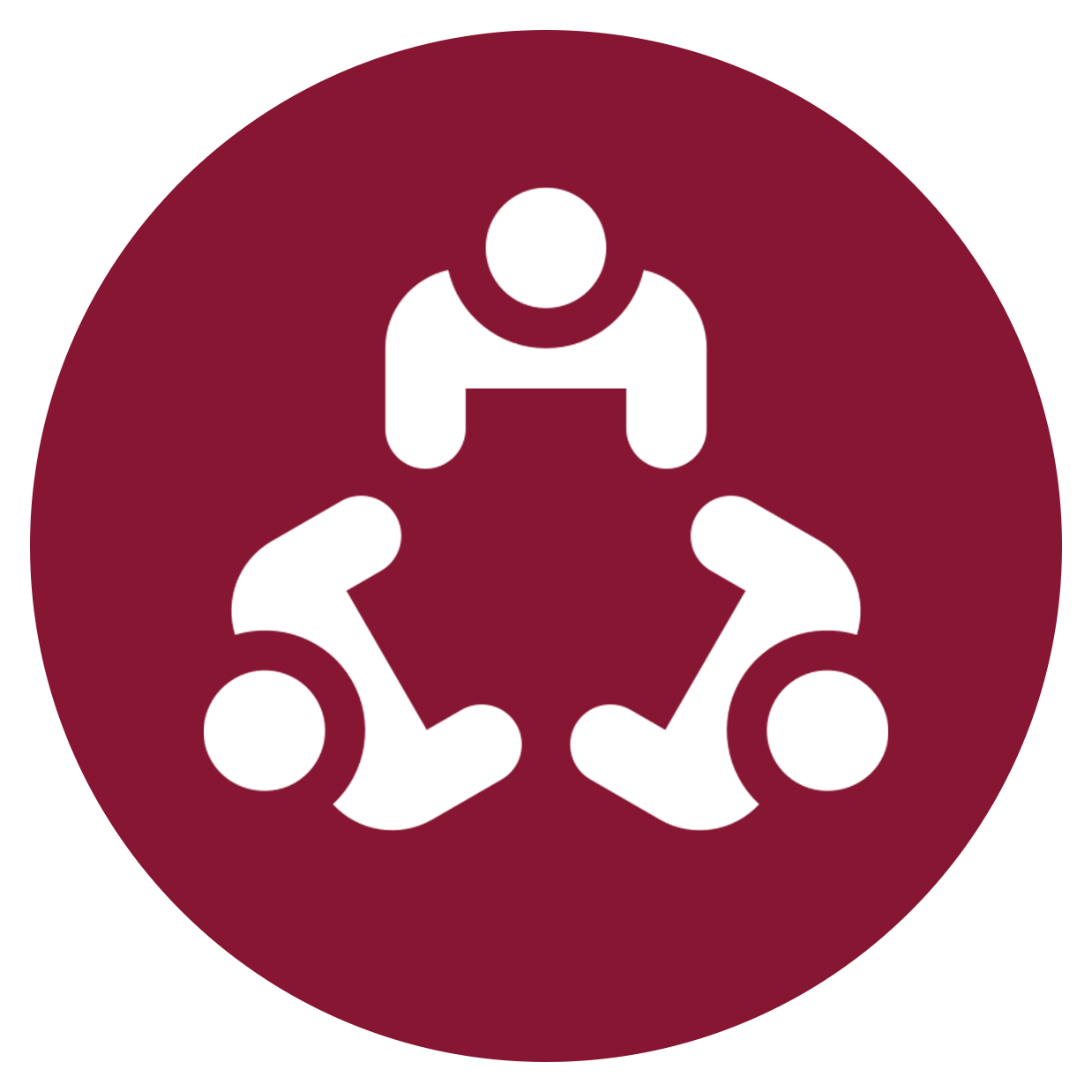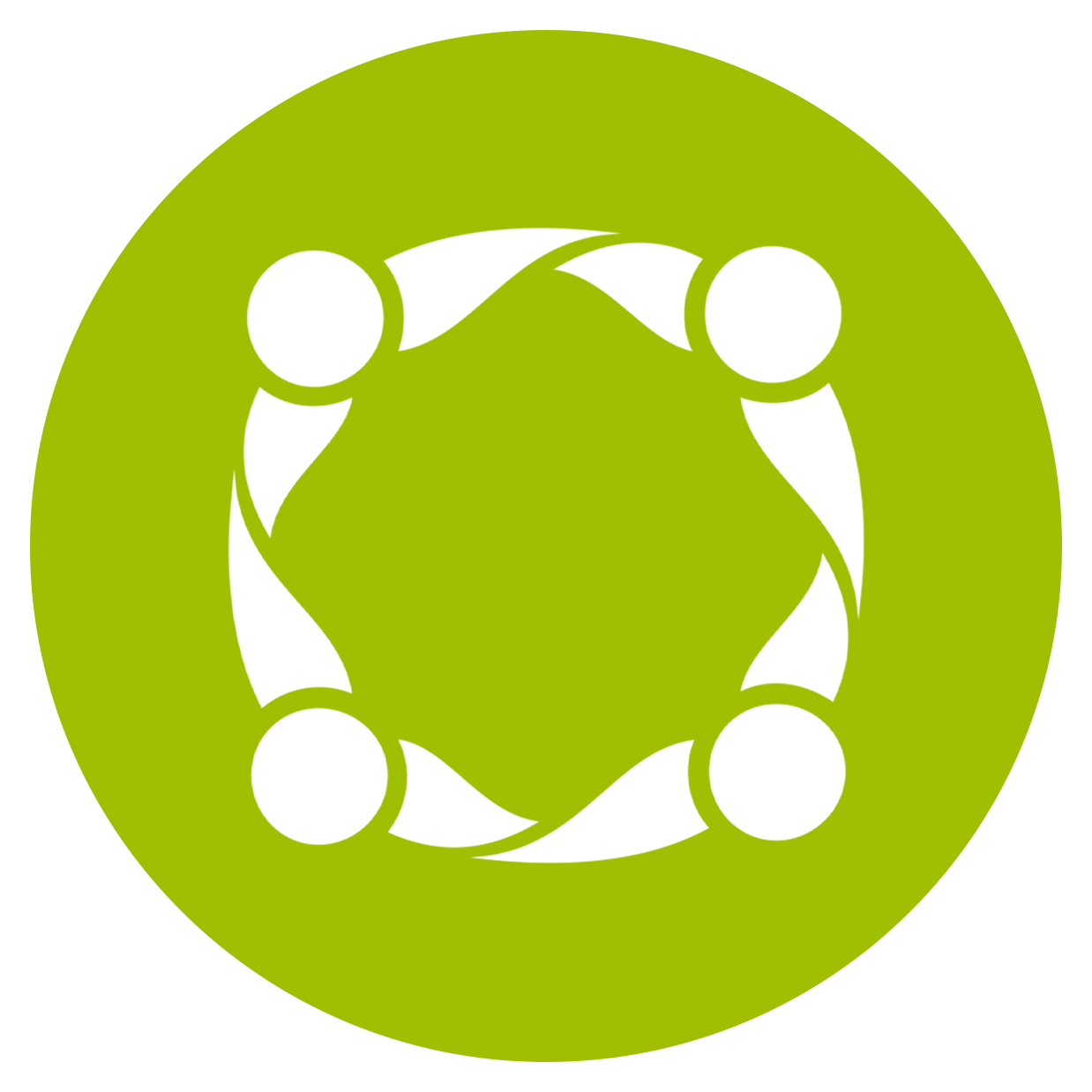What is Customer Effort Score or CES?


Table of Contents
Key Takeaways:
- World-class CX performers simplify the customer journey by reducing effort and friction.
- Use CES to understand how easy it is for customers to do business with you.
- Calculate CES by conducting a survey with ranking scores.
- The main benefit of CES is its ability to pinpoint friction in the customer journey.
- The best time to ask a CES question is immediately after a customer interaction with your business.
- Improve your CES by reducing friction and improving your CX efficiency.
What is CES: Customer Effort Score?
Customer Effort Score, or CES, is quickly gaining a reputation as a go-to CX metric for predicting customer loyalty.
It is a customer experience metric that measures how easy it is for your customer to do business with you, whether it be completing a transaction, resolving a support issue, or just communicating with your organization, either online or in-person.
By measuring “ease of use,” or the amount of effort it takes a customer to transact business with you, CES highlights the value of simplicity as a key component of the customer experience. Businesses considered “world-class” CX performers are those that simplify the customer journey by eliminating hassles and time-wasters. Banks and credit unions are no exception.
Conventional wisdom suggests that customers are more loyal to businesses that go “above and beyond” in delivering customer service. However, a prominent HBR study found that, in actuality, companies win loyal customers by helping them solve their problems quickly and easily. In other words, they reduce their customers’ effort.
Many businesses promote a CX strategy of “exceeding customer expectations.” Unfortunately, customer expectations are a moving target.
Imagine you’re a frontline worker: how can you know what each person you see on a daily basis expects today? It could be different from what they expected last week. And with consumer expectations so high today, thanks to personalized service from companies like Amazon, it may require a truly Herculean effort to give them MORE than they expect!
Rather than trying to exceed expectations, a more realistic – and ultimately more rewarding – strategy may be simply to remove the obstacles separating your customers from their goals.
Effort is fast becoming the catalyst of customer loyalty: research firm Gartner, largely credited with developing CES in 2010, found that 96% of customers experiencing a high-effort service interaction become more disloyal, compared to just 9% who have a low-effort experience.
As a crucial differentiator, then, customer effort has the potential to emerge as the critical means for financial institutions to compete on CX. The “world-class” performers will be those banking organizations that can minimize customer effort by eliminating friction. CES is the measure for achieving that outcome. This article will describe what CES is, how it is calculated, some of the benefits of using it, the different types of CES surveys, and logistical steps that can optimize its benefit to you.
How Do You Calculate a Customer Effort Score?
In calculating a Customer Effort Score, a survey first asks the respondent how easy or difficult they found the experience.
This may be phrased in a variety of ways, e.g., “To what extent do you agree or disagree with this statement: [Company] made it easy to handle my issue.”
Alternatively, the survey may ask, “On a scale of ‘very easy’ to ‘very difficult,’ how easy was it to do business with [company]?”
Whichever way the question is asked, CES is usually measured on a 5 to 10-point Likert scale aligned with degree-indicating phrases like “extremely difficult” or “extremely easy.”
Lower numbers are associated with very easy/low effort, and higher numbers are associated with more effort. Alternatively, a CES survey may use a Likert scale composed of emoticons (e.g., happy and sad faces), depicting a range of expressive reactions from happy to dissatisfied.


What Is the Average Customer Effort Score?
The average Customer Effort Score depends on both the industry being measured and the scale of measurement.
There is no cross-industry CES benchmark. This is because not all companies apply the original 7-point Likert scale, and because of the reality that different degrees of effort are required when customers engage with different kinds of services.
The rule of thumb in benchmarking, then, is to aim for an average of 5 or 6 (on a 7-point scale). If the score is lower than 5, your customers are encountering friction. All in all, aim for growth in your score, rather than a particular number, as an indicator of progress.
There is also no universal benchmark for a good CES because different ranges are used to measure answers: some businesses measure using a 1-5 scale, others 1-7, and – as noted above – others just dispense with numbers altogether and use happy and sad cartoon faces.
Gartner’s customer effort score benchmark, for example, uses a 1-7 scale and shows customer effort score percentages below 70% as areas for improvement and above 90% as strong CES scores.
Generally, however, the higher the CES, the better. A high CES score means that you provide an effortless experience for customers, while a low CES means that people find your processes difficult or your customer support ineffective. This is a warning that you need to make improvements, or you will be at risk of losing customers.
As with NPS, the more productive strategy is to focus on what drives your CES, rather than on the number itself.
Your approach should always be to listen to your customers, analyze, and act on their feedback to make their experiences with you easier.
While it may be tempting to compare your CES scores with those of your competitors, it should not be your main focus. Instead, it will serve you and your customers better to compare your current score with earlier measurements. This will show you if your customers are finding it more or less difficult to do business with you over time.
If your customer effort score is trending upward, then you are moving in the right direction. Your most important benchmark should always be your previous scores, as that is the comparison that reveals improvement of the service provided to your customers.
The Benefits of Using CES
The benefits of using CES begin with its diagnostic capabilities, but include its validity as a predictor of customer loyalty.
The theory behind CES is that customers are loyal when their experience with you is smooth.
Practically speaking, there’s not much to lose if you can’t exceed customer expectations. Customers are not likely to stop doing business with you if you meet their expectations. But you stand to lose a lot when you let them down.
The main benefit of using CES is its ability to help pinpoint the friction, or pain points, in customers’ experiences.
For example, where repeat calls are needed to get answers or complete a transaction, or where transfers and channel switching are common, the customer expends a greater amount of effort to overcome the difficulties.
But a CES survey has more benefits than just letting you know whether a client was particularly happy or unhappy with an interaction. CES is valuable as a predictor of growth, profit, and customer retention.
CES is a good tool to prioritize customer journey improvements or discover where to invest resources to improve specific touchpoints.
Measuring CES across all touchpoints in the customer journey enables CX leaders to identify high-effort areas. Then it suggests actions to optimize the customer experience – by making the process easier – and generate revenue as a result.
Other CX metrics can provide vital insights on team performance and customer happiness, as well as point out strengths and weaknesses that impact strategic objectives, like increasing customer retention and growing revenue.
On their own, these metrics may miss a key piece of the customer experience equation: how much effort your customers have to put in to get their issues resolved. CES can fill in this CX measurement gap.
The less effort a customer has to make, the better it is for your brand. An ease-of-use metric has become even more important as companies, including banks and credit unions, engage in digital transformation and offer more self-service options through a variety of channels.
The renewed focus on customer effort has also inspired discussions around what should actually be measured in order to understand whether effort is important, especially given the competitive advantage that comes with delivering differentiated experiences.
Today, companies realize that being easy to do business with is table stakes. Customers have too many options and too little tolerance to stick with an unpleasant experience.


CES Surveys
Different Types
There are typically three types of CES surveys companies use:
- A 1–10 scale (where 1 equals “very difficult,” and 10 equals “very easy)” or a Likert scale of five to seven choices ranging from “strongly disagree” to “strongly agree”
- A straightforward Agree/Disagree questionnaire
- A simple questionnaire with an emoji or emoticon rating system
/
/
The calculations for the scale surveys differ from the Agree/Disagree and emoji/emoticon surveys.
A CES survey question can be presented in a number of ways. This partial list shows the variety of questions that may be asked in a CES survey, in the context of asking for a scaled response:
- How much effort did it take to solve your problem?
- How easy was it to open your account?
- How easy was it to navigate the website?
- What level of effort was required on your part to resolve your issue?
- How easy did you find it to call our customer support executive?
The Best Time to Send a CES Survey
One major benefit of a Customer Effort Score survey is that it can be used to assess customer satisfaction with specific processes by asking questions immediately after important touchpoints in the customer journey, like opening an account or closing a loan.
The perfect time to ask a CES question is when your customer has just interacted with your company.
If the question is posed immediately, there is a good chance that you will get an unbiased answer because the memory of the experience is fresh. Asking the CES question after a day or two may not get you a response that is as honest or accurate.
You can ask a CES question at different points of interaction, and in different channels, including when the customer completes a live chat on your website, when they are about to leave your website, or after an email or phone interaction. There are many tools with which you can ask CES questions.
It is also recommended to send a CES survey immediately after a service interaction with a frontline employee.
Customers who have frustrating or unhelpful customer service interactions are likely to take their business elsewhere. By following up with the customer directly after an interaction, you can find out if a customer had a difficult experience with the call center, agent, or mobile app.
This capability of “closing the loop” with the customer provides an opportunity to intervene to restore the relationship before they take their business elsewhere.
How Do I Improve My CES Score?
Simply put, to lower customer effort, you have to reduce friction – for example, by making the customer’s experience less time-consuming and more efficient.
You can also give your frontline employees greater ownership of the experience, empowering them to make decisions and take action. The more obstacles you put in their way, or fail to remove, the harder it becomes for them to deliver quality service. High employee effort translates into high customer effort. Addressing the former will empower your teams to resolve the latter.
In addition, simplifying processes by increasing self-help options, like online or mobile banking, can reduce customer effort.
By taking the following actions, banks and credit unions can improve their ability to create loyal customers:
- Reduce the need for repeat calls by anticipating related downstream issues
- Increase the intuitiveness of self-help channels
- Minimize the need for customers to switch service channels or repeat information
- Provide easy access to human assistance, when needed or desired
- Decrease excessive wait times to speak to a person
Resolving issues in a single session and preventing downstream issues are the keys to reducing customer effort. Each customer struggle uncovered by your CES survey is an opportunity for improvement and optimization. This is where you should invest your resources and efforts.
Journey mapping is one way that financial institutions can operationalize CES.
By identifying actual and potential “pain points” along a visualized customer path, businesses can develop a strategy for making the journey smoother – for both that customer and future customers that follow a similar path.
Why Is Reducing Customer Effort Important?
Reducing customer effort is important because it can strengthen your customers’ relationship with you.
According to Gartner research, low customer effort is the strongest indicator of customer loyalty — even more than customer satisfaction. When you make it easy for customers to achieve their goals, they will continue doing business with you. Put obstacles in their way, and they are more likely to find a reason to leave.
The influential HBR study mentioned earlier shook up the CX industry because it concluded that “delighting” customers – the stated objective of many CX programs – does not build customer loyalty.
On the other hand, reducing their effort – the work they must do to get their problem solved – does.
Second, acting deliberately and intentionally on insight gathered from CES surveying can help improve customer service and decrease customer churn.
When your customer has to exert effort to do business with you, they’ll get through that transaction, but you won’t get many chances for the next one, or the next product, or the relationship.
You create loyal customers by helping them solve their problems – not by creating more.
By making things easier, you give your customers TIME – for things they’d rather be doing. The time you give back to your customers becomes your competitive advantage.


When to Use Customer Effort Score Other Metrics
Customer Effort Score can be a useful complement to other popular CX metrics.
One drawback of CES is its transactional focus: it only measures a single process or customer interaction, so it doesn’t give a full picture of the entire customer journey or relationship.
This is why CES is often used in tandem with two other popular customer experience metrics, Net Promoter Score (NPS)® and Customer Satisfaction (CSAT): to get a more holistic picture of customers’ satisfaction and loyalty.
Net Promoter Score, or NPS, measures long-term customer loyalty.
NPS is calculated by asking customers how likely they are to recommend your brand, products, or services to a friend or colleague. NPS purports to determine if your customer experience is creating loyalty over the long term.
It also helps you discover which customers are brand ambassadors and which customers are more likely to defect to your competitors.
Gartner actually predicts that, despite its current popularity across industries, more than 75% of organizations will abandon NPS as a measure of success for customer service by 2025.
Moreover, a Filene study found that NPS was not as strongly correlated with customer loyalty as CES.
The Filene study also found little correlation between customer satisfaction and loyalty.
Customer Satisfaction Score (CSAT), measures short-term customer satisfaction. It’s measured by asking customers how they would rate their satisfaction with your business in general, an interaction, or a product or service.
CSAT can help you measure and improve specific touchpoints along the customer journey, so it should be limited to asking about one touchpoint at a time and tracking progress on improving that touchpoint.
If CSAT is lower at one point of the journey, you can focus your efforts there to begin making effective improvements to the customer experience.
Applied correctly, CES, NPS, and CSAT can supplement each other to provide a complete picture of your customer experience. But they are not interchangeable. Knowing when to use each metric, and what to do with the feedback provided, can make all the difference in delivering best-in-class CX.
CES Pros and Cons
Like any CX metric, CES has its pros and cons to be considered:
Advantages of CES
- It strongly predicts the behavior and satisfaction level of customers.
- It is highly actionable and makes it easy to take corrective actions quickly.
- It enables you to find out weaknesses at each customer touchpoint.
- It is better at predicting brand loyalty and repurchase behavior, and is less volatile than other metrics.
- The scoring model applies to all client-facing processes, which makes it extremely easy to take corrective actions throughout an organization.
Disadvantages of CES
- It does not provide a clear picture of the customer’s overall relationship with your business.
- It doesn’t immediately tell you the customer’s problems in detail. A follow-up question or two may be needed to make the customer’s feedback actionable.
- There is a lack of segmentation of results based on the type of customer.
The impact of factors like your cost, competitors, or product quality is not taken into consideration.
How easy it is for a person to get the support they need and the outcome they expect is what sets apart good and bad experiences.
Today, companies are punished for poor experiences through scathing online reviews, grievances posted on social media, or customers deciding to never purchase from a brand again.
All service-driven companies rely on great customer service to build customer loyalty, which consists of three specific behaviors you want to increase:
- Repurchasing: customers continue to buy from you
- Expanding share of wallet: customers do more business with you
- Advocating: Customers tell their friends and family about you, referring new business to you
Customers are most influenced in their purchase behaviors by how easy it is to do business with a company. Building a customer experience free of hassles and hurdles will ultimately win you more customers than trying to constantly exceed their expectations.
Using CES can help you keep your finger on the pulse of how much effort your customers have to exert to do business with you.
If it requires too much effort, you risk driving your customers away. But if you make things easy on your customers by eliminating friction, reducing frustration, and simplifying the customer journey, you can gain loyal customers who help your business grow. And that’s the goal of every successful business.
Are you ready to build loyalty with “world-class” performance that reduces your customers’ effort in their experiences with your financial institution? Then we’re ready to help with the solutions, analytics and expertise to get you there. Reach out to get started!
Have More Questions? Reach Out to Our Team Of Experts
Net Promoter®, NPS®, NPS Prism®, and the NPS-related emoticons are registered trademarks of Bain & Company, Inc., Satmetrix Systems, Inc., and Fred Reichheld.
















